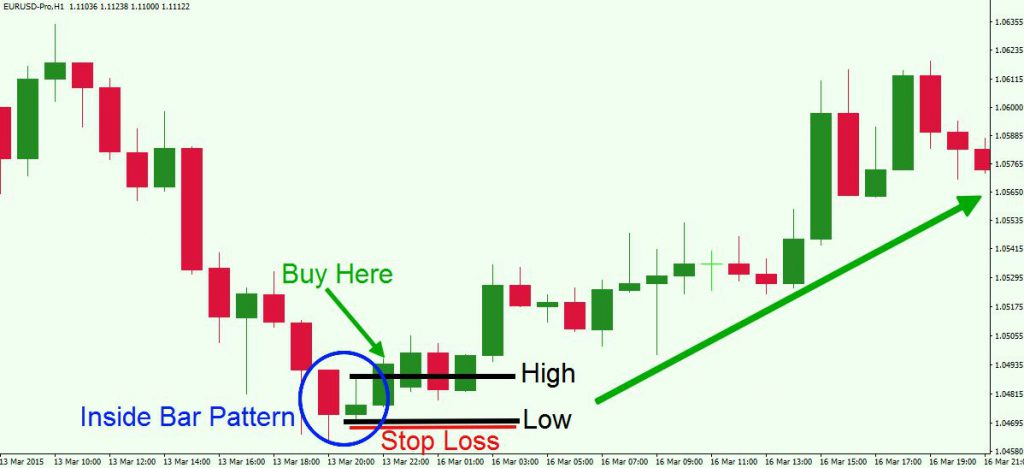The inside bar pattern is another formation, a type of candlestick pattern.
This is essentially a two-bar candlestick pattern.
When a particular bar has a high and a low that is completely contained by the preceding bar, we can conclude that it is an inside bar.
We will begin by describing a little more about an inside bar pattern and then move on to trading with it.

What is an Inside-bar Pattern?
An inside bar shows that the price of the currency pair is consolidating. It forms after a large move in price in the market. The candle should fully contain the previous bar.
Trading with an Inside-bar Pattern
When the price exits the inside bar’s range, we can assume that price action will continue in the same direction as the inside bar breakout. As a trader, you should watch out for a break from the inside bar. This will also allow you to trade in the direction of the break.
Techniques to Trade an Inside-bar Pattern
Traders use different rules and variations when they trade an inside bar pattern. Some of these are explained below, and you can choose them according to your needs:
- Entering an inside bar trademark – mark the low and high of the inside bar consolidation range. These are two-pointers used to trigger a potential trade. If the price action breaks the range upwards, you should trade the long side. Conversely, if it breaks downwards, you should trade the short-sided.
- Stop-loss when trading inside bar patterns – we know that a stop-loss strategy is recommended for any forex strategy. Where you place your stop-loss in an inside bar pattern depends on the direction of the break. If the inside bar range gets broken upwards, then you should put the stop-loss order right underneath the lower candlewick of the inside candle. This is a bullish breakout. Of course, the opposite is valid for a bearish breakout when the range is broken downwards.
- Take profit on the inside bar setup – it is suitable for a trailing stop after the price has moved in your desired direction. Inside bars often experience a prolonged impulse move after the breakout. A fixed take profit target at 1.5:1 or 2:1 reward to risk ratio is also beneficial.
- Inside day breakout – incorporating the inside bar with the Daily Chat is one of the highest probability time frames. When this happens, it is called an inside day pattern. This is because it responds to traders’ behavior during one whole day of trading. There is also an inside day breakout with a narrow range, which lasts only four days.
- Hikkake pattern – this variation of the inside bar candlestick depicts failure. However, the failures, many times, bring decent opportunities.

Bottom Line
The inside bar pattern highlights whether the market prices are consolidating or pausing.
When we trade with an inside bar, always place a stop-loss order. The position of it depends on whether you are buying or selling.
Other tips and rules should also be considered when trading inside bars.


